Insects and Spiders
Grasshopper Beer
Offered by Benchtop Brewing Co. of Norfolk, Virginia. The name of the beer is Chapulin Exchange, but the star ingredient is grasshoppers, as well as chipotle peppers and lime zest. The brewer won't say exactly how many grasshoppers each beer contains. But whatever the number is, I'll pass.More details: pilotonline.com
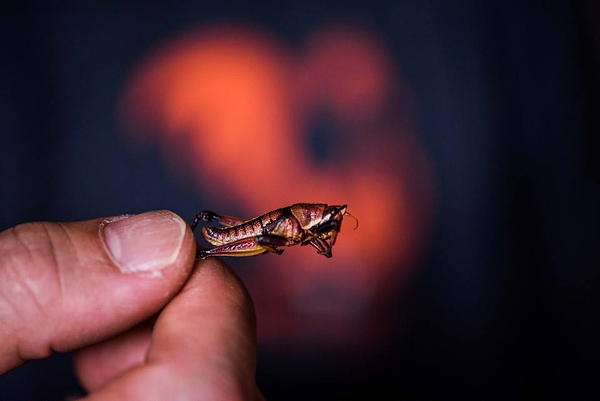
Posted By: Alex - Mon Mar 11, 2019 -
Comments (0)
Category: Inebriation and Intoxicants, Insects and Spiders
Insect Balls
The insect balls represent a healthy culinary specialty that mixes meal worms with rice, carrots, celery, leeks and a pinch of chili, said Essento co-founder Christian Bärtsch.
Currently, they're only available in Switzerland. More info.
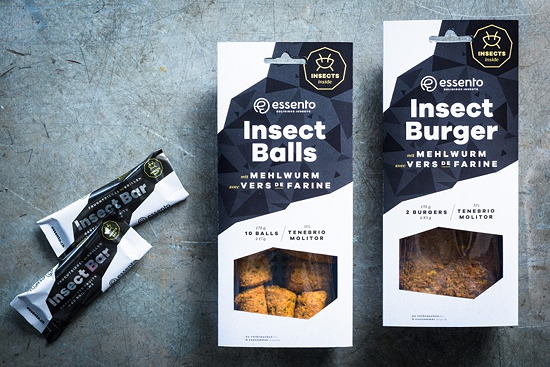
Posted By: Alex - Sun Sep 09, 2018 -
Comments (1)
Category: Food, Insects and Spiders
Tarantula Burger
Served up at Bull City Burger and Brewery in Durham, North Carolina. A cheeseburger topped with a tarantula. From Fox 13 News:"When I first sink my teeth into it, a lot of crunch. Imagine like snapping twigs, like it had that same sound in my head when I was biting,” he described.

Posted By: Alex - Mon Apr 30, 2018 -
Comments (1)
Category: Food, Insects and Spiders
Death of a Fly
The product.
Posted By: Paul - Fri Dec 29, 2017 -
Comments (2)
Category: Anthropomorphism, Business, Advertising, Death, Insects and Spiders
Most Cockroach-Infested Home
In early 1997, Combat Insect Control ran a contest offering a $5000 cash prize to the person with the most cockroach-infested home.The winner, from over 1000 people who entered, was Mary Esposito of Forest Park, Georgia. She complained that she had roaches living in her dishwasher, refrigerator, oven, coffeemaker, VCR, wallpaper, dresser drawers, and bathtub faucet. An entomologist hired by Combat estimated there were 75,000 roaches in her home.
Somehow I don't think that "most cockroach-infested home" is a record that will ever make its way into Guinness.
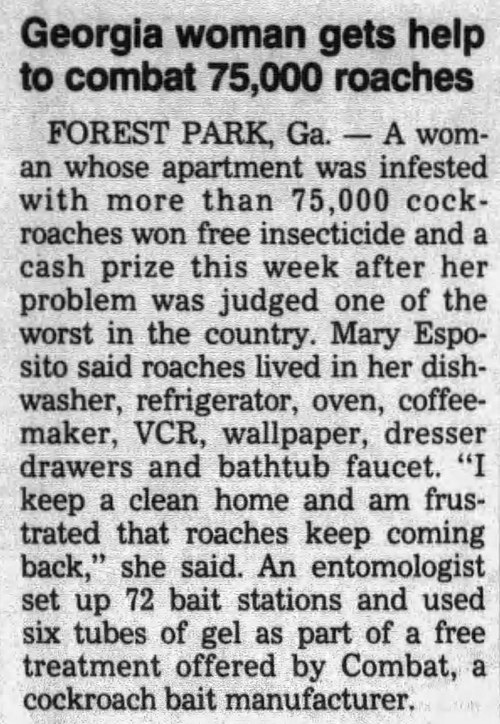
Orlando Sentinel - June 12, 1997
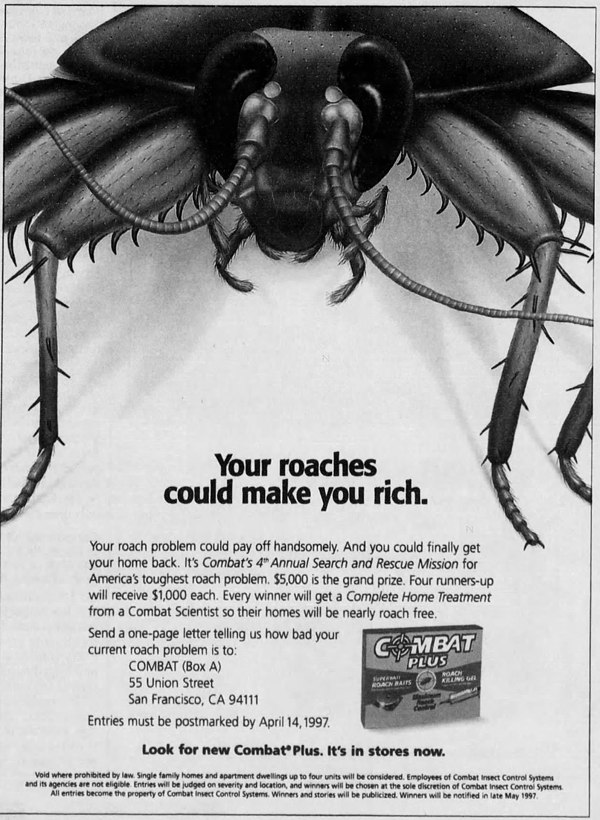
Palm Beach Post - Mar 16, 1997
Posted By: Alex - Fri Oct 27, 2017 -
Comments (1)
Category: Insects and Spiders, World Records, 1990s
President swallows wasp
A few days ago, a wasp flew into the mouth of Luis Guillermo Solis, the president of Costa Rica, while he was outside speaking to reporters. Solis swallowed it. Then he declared (in Spanish), "I ate it. I ate the wasp." More info at wtnh.com.I'd like to see more politicians gulping insects out of the air like frogs as they speak. It would improve political oratory immensely.
The event also recalled that classic unscripted moment during Raiders of the Lost Ark when a fly appeared to crawl into the mouth of Paul Freeman, who was playing the character of the archaeologist Belloq. Although according to this site, the fly didn't really crawl into his mouth. The film editors, as a joke, took out a few frames to make it look as if the fly entered his mouth.
Posted By: Alex - Wed Jun 21, 2017 -
Comments (2)
Category: Insects and Spiders, Politics
Swarming: Its Control & Prevention
From the Barnsley Beekeepers Association:However, what Snelgrove (I assume that's him) is demonstrating on the cover is Bee Bearding. I'm guessing that you need to master swarming control before attempting bee bearding, but I don't think he reveals the tricks of bee bearding in his book, which you can download here if you're curious to read it.
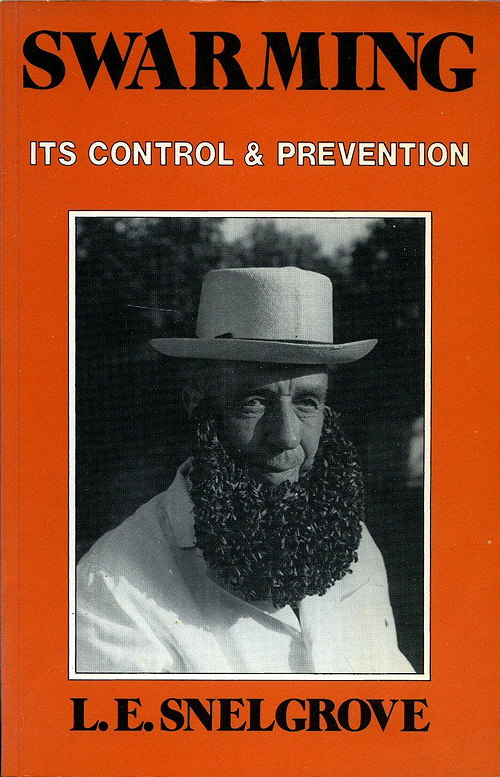
Posted By: Alex - Sat Jun 17, 2017 -
Comments (0)
Category: Insects and Spiders, Books
The Philadelphia Insectarium
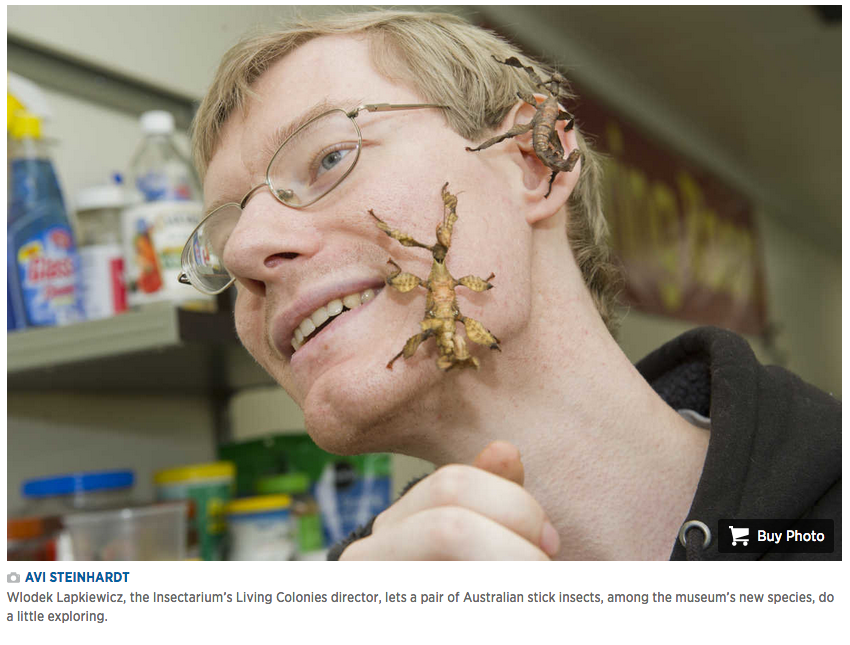
World's biggest "insect zoo."
Article here.
Posted By: Paul - Tue May 09, 2017 -
Comments (1)
Category: Insects and Spiders, Museums
DDT Wallpaper
Trimz debuted their children's room DDT-impregnated wallpaper in 1946. It was available in two patterns: "Jack and Jill" or "Disney Favorites."It was certified to be absolutely safe "because the DDT is fixed to the paper. It can't rub off!" But since you're not going to find any similar product sold nowadays, I'm guessing that it actually did rub off.
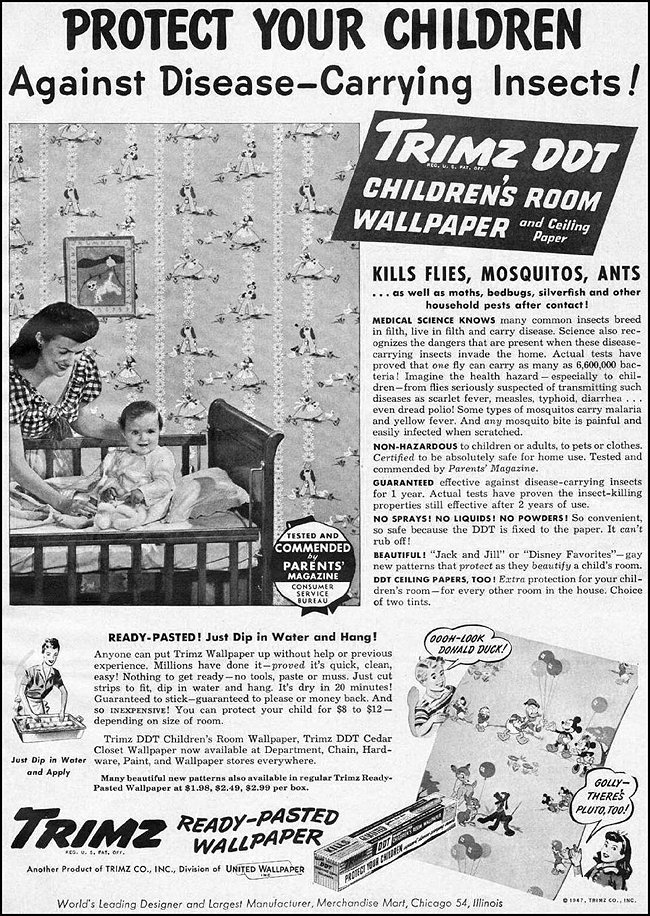
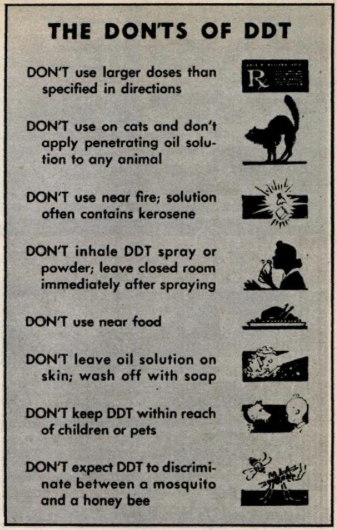
via Envisioning the American Dream
Posted By: Alex - Sat Mar 04, 2017 -
Comments (5)
Category: Insects and Spiders, 1940s
Cockroach Magnetization
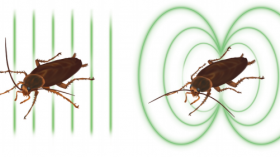
Researchers at Nanyang Technological University in Singapore recently made an unusual discovery, which is that "the magnetic properties of living cockroaches are strikingly different from those of dead cockroaches."
Place a living cockroach in a magnetic field and it'll become magnetized, and then stay magnetized for about 50 minutes.
Place a dead cockroach in a magnetic field and it'll also become magnetized, but then remain magnetized for almost 50 hours.
The reason for the difference:
So I'm curious how strongly magnetized dead cockroaches become. Would it be possible to use them as refrigerator magnets?
More info: MIT Technology Review
Posted By: Alex - Tue Feb 28, 2017 -
Comments (5)
Category: Insects and Spiders, Science, Experiments

| Who We Are |
|---|
| Alex Boese Alex is the creator and curator of the Museum of Hoaxes. He's also the author of various weird, non-fiction, science-themed books such as Elephants on Acid and Psychedelic Apes. Paul Di Filippo Paul has been paid to put weird ideas into fictional form for over thirty years, in his career as a noted science fiction writer. He has recently begun blogging on many curious topics with three fellow writers at The Inferior 4+1. Contact Us |




